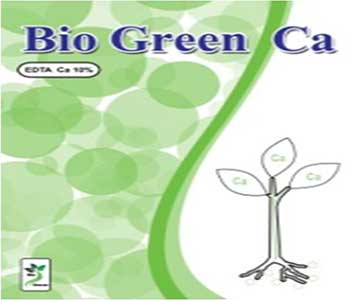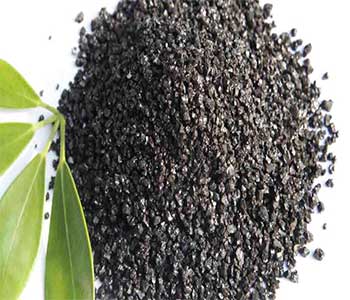articles

The role of calcium in increasing the salinity tolerance of crops
Salinity stress affects plant growth by disrupting ion balance, reducing water potential and ion toxicity. Increasing calcium ions to a level of 10 mM in the plant growth medium reduces the destructive effects of salinity stress to some extent. Changes in calcium concentration in the two dimensions of nutrition and regulation have significant effects on various aspects of growth, photosynthesis, metabolism, water absorption and transport, and many of these reactions can be directly affected by the interaction ca ++ 2 and Na ++ 2 is at the membrane level of plasma and calcium signaling process. In this article, based on the effect of calcium supplements on plant response to salinity, cellular and molecular aspects of calcium function in plants are discussed. On this basis, and with emphasis on ion message transmission and homeostasis systems in a functional model for the whole plant, it is expected that biotechnology strategies to increase plant tolerance and improve crop yield in saline conditions can be presented. Source: World of Agriculture No. 40
۱۹ / ۷ / ۱۴۰۰

The effect of humic acid, seaweed extract (Ascophyllum nodosum) and some micronutrients on growth and yield of maize (540 NS)
The use of chemical fertilizers has caused irreparable damage to the environment. For this reason, the process of moving agriculture towards sustainable agriculture, which is a kind of agriculture for human interests, is more efficient in using resources and is in balance with the environment. Thus, for the development of sustainable agriculture, the implementation of the system with sufficient input in combination with the use of chemical and organic fertilizers, especially biofertilizers as an alternative solution for agriculture to produce crop and maintain yields at an acceptable level are effective. In this regard, in order to study the effect of humic acid, seaweed extract and micronutrients on the yield and yield components of maize cultivar 540, as well as the effect of these factors on the activity of antioxidant enzymes in the experimental design of Spit Factorial based on a randomized complete block design with 4 replications In 1390, it was conducted in a research farm in Aradan city of Semnan province. The results show that the application of different treatments of humic acid, seaweed extract and micronutrients can affect the yield and different components of maize cultivar 540 and in some cases make significant differences, but in the diameter of the ear is significantly different. Failed. The results indicate that the use of different treatments of humic acid and micronutrients is effective on the activities of antioxidant enzymes, but in the case of seaweed extract, there is no evidence to confirm the effect of this factor on the activity of enzymes studied. Also, applying different treatments of the three mentioned factors is effective on the growth parameters of the studied plant. Author: Mehrnoosh Rafiei (Islamic Azad University of Damghan)
۱۹ / ۷ / ۱۴۰۰

Control of powdery mildew and false with the combined use of Glass MG and Blaster
Phytoalexins are compounds that plants usually produce in response to various stresses, living (such as pathogens and insects) or non-living (such as drought and cold, etc.). Some of these compounds are toxic and can increase the plant's autoimmune defense against pathogens by activating specific metabolic cycles in the plant. Phytolexin can inhibit or control the penetration of pathogens and fungi such as Pseudoperonospora cubensis (the cause of false white spot disease) and Sphaerotheca fuliginea (the cause of superficial white spot disease) in cucumbers and similar plants. Different types of phytolexins are involved in increasing plant defense, such as: flavonoids, sesquiterpenes, furanoterpenoids, polystylenes, dihydrofenanthrenes, etc. The synthesis and accumulation of phytolexins in the plant can be stimulated by some natural compounds (such as: Forti Cole Sana, Forticol Mita, Forticol Citrus) and the phosphide compounds Potassium and Magnesium (Glass Mg). In this experiment, plants were studied in the greenhouse under controlled conditions to investigate the effect of phytolexin on reducing the effect of these diseases on the plant.
۱۹ / ۷ / ۱۴۰۰

The role of macro and micro elements in plant nutrition
Nitrogen is found in plants as organic compounds but more or less in the form of nitrides and nitrates. Nitrogen is involved in the structure of plant cells in the form of proteins, nucleic acids, chlorophyll, enzymes and hormones. Plants have the following reactions to nitrogen.
۱۹ / ۷ / ۱۴۰۰

The effect of humic acid on root and shoot growth of Sionz and Sabalan cultivars
Wheat root development is especially important at the beginning of the growing season. Humic acid, as an organic acid derived from humus and other natural sources, increases root and shoot biomass through hormonal effects and improves nutrient uptake. In order to investigate the effect of humic acid on the growth of roots and shoots of wheat, a factorial experiment was conducted in a completely randomized design in the research greenhouse of the Faculty of Agriculture, Ferdowsi University of Mashhad in 2008. Treatments included humic acid at four levels (0, 100, 200 and 300 mg per liter of Hoagland solution) and two varieties of autumn wheat (blue) and Sabalan (rainfed). The results showed that humic acid significantly increased the ratio of root area to leaf area and leaf fresh chlorophyll number. Sabalan cultivar had the highest surface area, diameter, total length and root weight. Therefore, Sabalan cultivar was more efficient than Sions cultivar in using humic acid and showed the highest average of measured traits at a concentration of 300 mg / l. Also, the highest leaf area and weight was observed in Sabalan cultivar and concentration of 300 mg / l humic acid, while in Siones cultivar, concentration of 200 mg / l humic acid was found to be more effective in most traits and this cultivar responded positively to lower levels of humic acid. Terry showed up. Journal of Water and Soil Volume 23 Number 2
۱۹ / ۷ / ۱۴۰۰

Effect of application of humic acid in irrigation water on yield and yield components of maize
Ecological agriculture pays attention to the use of organic matter and organic acids are one of the important sources of organic matter. In order to investigate the application of humic acid in irrigation water on yield and yield components of corn (single cross cultivar 704), an experiment was conducted in the research farm of the Faculty of Agriculture, Ferdowsi University of Mashhad, in 2009 in a randomized complete block design with three replications. Experimental treatments included different levels of humic acid (0, 500, 1500, 2500, 3500 and 4500 g / ha). The results showed that humic acid had a significant effect on leaf area index, leaf area durability, grain yield, biological yield, number of seeds per row and ear length, but its effect on harvest index, 1000-seed weight and number of rows was not significant. Treatments of 3500 and 4500 g / ha of humic acid, due to higher index and leaf area durability, had higher grain yield. The lowest grain yield was obtained in the control treatment. Also, the highest and lowest biological yields were obtained in treatments of 4500 g / ha and control, respectively. Increased grain yield was related to the increase in number of seeds per row and ear length. The highest number of seeds per row and also cob length were obtained in 3500 g / ha treatment and the lowest in control treatment. In general, it can be said that the use of humic acid due to various physiological effects, in addition to increasing the yield of corn, can play a positive role in reducing the use of chemical fertilizers and also reduce environmental pollution and as a substance with a natural source in To be used to stabilize and increase crop production. Journal of Agricultural Ecology Volume 2 Number 1
۱۹ / ۷ / ۱۴۰۰

Reducing the negative effects of drought stress in chickpeas with the use of humic acid and seaweed extract
This experiment was performed in three replications as a split plot in a randomized complete block design. The main factor is drought stress in four levels of complete irrigation (control), water cut in flowering stages, pod flowering and irrigation cut from flowering to harvest stage. The sub-factor was foliar spraying in three levels of distilled water (control), humic acid and seaweed extract and the sub-factor was related to Hashem, ILC482 and local Shahroud (Miami) cultivars. The results showed that the interaction effect of drought stress treatment in foliar application on number of pods per plant, 100-seed weight and harvest index was significant. Cultivars under irrigation treatments showed statistically significant differences in biological yield, economic yield and harvest index. Also, the use of foliar spraying with humic acid compounds and seaweed extract affected the number of pods per plant, number of seeds per plant and harvest index in different cultivars. Drought stress reduced grain yield by 13% in different cultivars of chickpea, but the use of humic acid as foliar application was able to reduce the negative effects of stress by 50% increase in the number of pods per plant and seeds per plant. The response of different cultivars to the use of natural materials was almost the same, but ILC482 cultivar was more efficient than the other two cultivars due to the higher number of pods and seeds per plant after the use of natural materials. Production of crops under environmental stress (crop science) of Shahed University
۱۹ / ۷ / ۱۴۰۰

